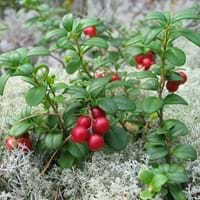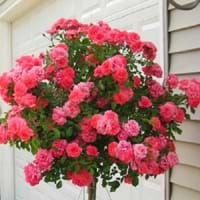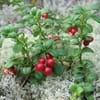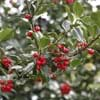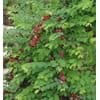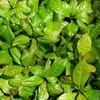Life Span
Perennial
Perennial
Type
Broadleaf Evergreen
Perennial
Origin
Northeastern United States, North-Central United States, Canada, Northern Europe, Russia/Siberia, Japan
Hybrid origin
Types
V. vitis-idaea var. vitis-idaea, V. vitis-idaea var. minus Lodd
Not Available
Number of Varieties
Not Available
Habitat
Mountain tops, Rocky areas
All sorts of environments
USDA Hardiness Zone
2-6
5-9
AHS Heat Zone
Not Available
9-1
Sunset Zone
21,22
H1, H2, 6, 7, 8, 9, 12, 13, 14, 15, 16, 17, 18, 19, 20, 21, 22, 23, 24
Habit
Prostrate/Trailing
Upright/Erect
Flower Color
White, Pink, Light Pink
Red, Ivory
Flower Color Modifier
Bicolor
Not Available
Fruit Color
Red
Non Fruiting Plant
Leaf Color in Spring
Green, Dark Green
Dark Green
Leaf Color in Summer
Dark Green
Dark Green
Leaf Color in Fall
Dark Green
Dark Green, Yellow green, Orange Red
Leaf Color in Winter
Dark Green
Light Green
Plant Season
Spring, Summer, Fall, Winter
Spring, Summer, Fall
Sunlight
Full Sun, Partial Sun, Partial shade
Full Sun, Partial Sun
Type of Soil
Loam, Sand
Loam, Sand
The pH of Soil
Acidic
Acidic, Neutral
Soil Drainage
Well drained
Well drained
Bloom Time
Late Spring, Early Summer
Spring, Late Spring, Early Summer, Summer, Late Summer, Early Fall, Fall
Repeat Bloomer
No
Not Available
Tolerances
Not Available
Drought
Where to Plant?
Ground, Pot
Container, Ground, Pot
How to Plant?
Seedlings
Cuttings
Plant Maintenance
Medium
Medium
Watering Requirements
Requires regular watering, when new, water every week
Average Water Needs
In Summer
Lots of watering
Lots of watering
In Spring
Moderate
Moderate
In Winter
Average Water
Average Water
Soil pH
Acidic
Acidic, Neutral
Soil Type
Loam, Sand
Loam, Sand
Soil Drainage Capacity
Well drained
Well drained
Sun Exposure
Full Sun, Partial Sun, Partial shade
Full Sun, Partial Sun
Pruning
No pruning needed in the early stages
Remove damaged leaves, Remove dead branches, Remove dead leaves
Fertilizers
for fruiting plants, use high phosphorous content fertilizer, since leafy plants, use higher nitrogen content fertilizer
All-Purpose Liquid Fertilizer
Pests and Diseases
Red blotch
Beetles, Black Spot, Caterpillars, Downy mildew, Mosaic viruses, Powdery mildew, Rust, Scale insects, Thripes
Plant Tolerance
Not Available
Drought
Flower Petal Number
Single
Double
Edible Fruit
Yes
Not Available
Foliage Texture
Fine
Medium
Foliage Sheen
Glossy
Glossy
Invasive
No
Not Available
Self-Sowing
No
Not Available
Attracts
Birds
Birds, Butterflies
Allergy
Nausea, Vomiting
Rash
Aesthetic Uses
Showy Purposes
Showy Purposes
Beauty Benefits
Not Available
Not Available
Environmental Uses
Food for birds
Air purification
Medicinal Uses
Arthritis, Gout, Kidney problems, Urinary tract problems
Not Available
Part of Plant Used
Fruits
Flowers
Other Uses
Used As Food, Used in making beverages
Oil is used in perfume, soaps, creams, etc.
Used As Indoor Plant
No
Yes
Used As Outdoor Plant
Yes
Yes
Garden Design
Alpine, Bog Garden, Container, Edging, Edible, Foundation, Groundcover, Rock Garden, Wall, Wildflower
Container, Cutflower, Feature Plant, Foundation, Mixed Border, Topiary / Bonsai / Espalier
Botanical Name
VACCINIUM vitis-idaea
Rosa Andeli
Common Name
Lingonberry
Double Delight Rose, Hybrid Tea Rose
In Hindi
Lingonberry
Double Delight Rose
In German
Preiselbeere
Double Delight Rose
In French
Airelle
Double Delight Rose
In Spanish
Lingonberry
Double Delight Rose
In Greek
Lingonberry
Double Delight Rose
In Portuguese
Lingonberry
Prazer dobro Rosa
In Polish
borówki brusznicy
Double Delight Rose
In Latin
Lingonberry
Double Delight Rose
Phylum
Tracheophyta
Magnoliophyta
Class
Magnoliopsida
Magnoliopsida
Family
Ericaceae
Rosaceae
Clade
Angiosperms, Asterids, Eudicots
Not Available
Tribe
Not Available
Not Available
Subfamily
Not Available
Not Available
Number of Species
Not Available
Not Available
Importance of Lingonberry and Double Delight Rose
Want to have the most appropriate plant for your garden? You might want to know the importance of Lingonberry and Double Delight Rose. Basically, these two plants vary in many aspects. Compare Lingonberry and Double Delight Rose as they differ in many characteristics such as their life, care, benefits, facts, etc. Every gardener must at least have the slightest clue about the plants he wants to plant in his garden. Compare their benefits, which differ in many ways like facts and uses. The medicinal use of Lingonberry is Arthritis, Gout, Kidney problems and Urinary tract problems whereas of Double Delight Rose is Not Available. Lingonberry has beauty benefits as follows: Not Available while Double Delight Rose has beauty benefits as follows: Not Available.
Compare Facts of Lingonberry vs Double Delight Rose
How to choose the best garden plant for your garden depending upon its facts? Here garden plant comparison will help you to solve this query. Compare the facts of Lingonberry vs Double Delight Rose and know which one to choose. As garden plants have benefits and other uses, allergy is also a major drawback of plants for some people. Allergic reactions of Lingonberry are Nausea and Vomiting whereas of Double Delight Rose have Rash respectively. Having a fruit bearing plant in your garden can be a plus point of your garden. Lingonberry has showy fruits and Double Delight Rose has no showy fruits. Also Lingonberry is not flowering and Double Delight Rose is not flowering . You can compare Lingonberry and Double Delight Rose facts and facts of other plants too.
